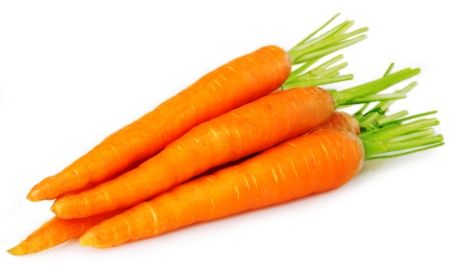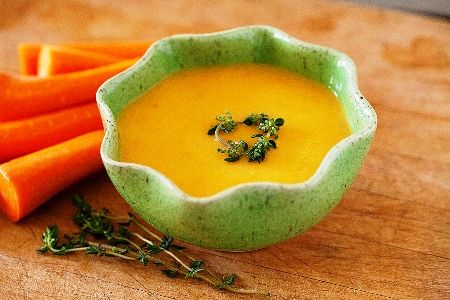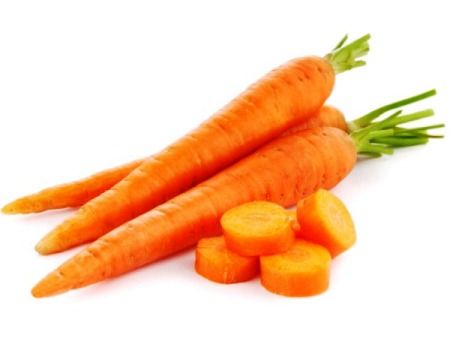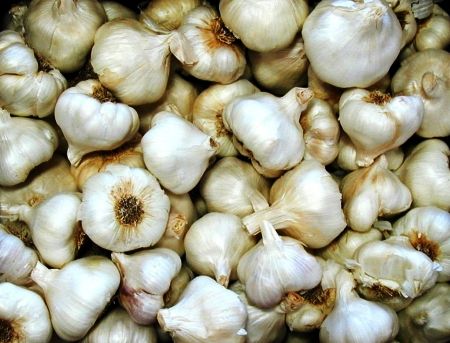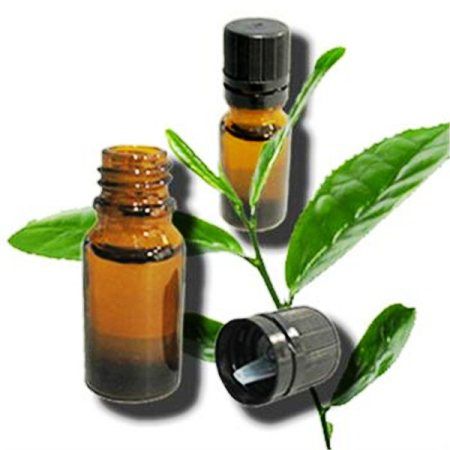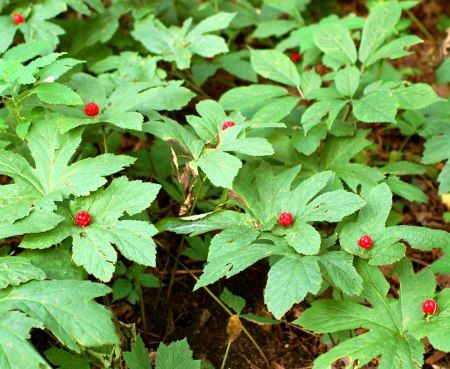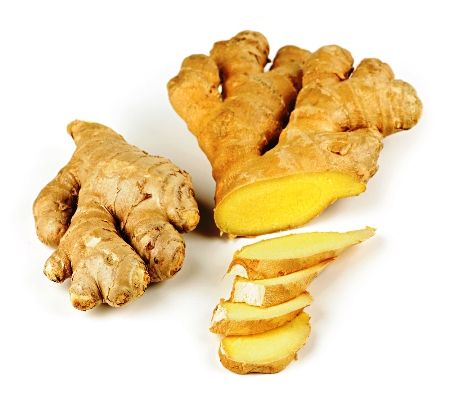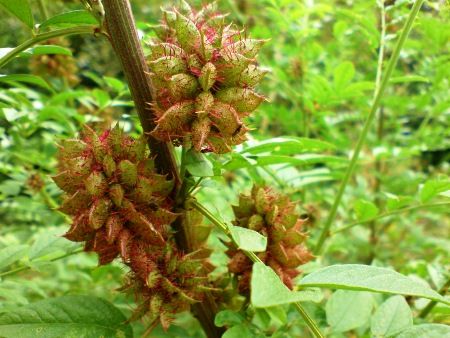Carrot Chronicles
Botanical name: Daucus carota
Extremely versatile to eat and available nearly anywhere in the world,
carrots have been around for centuries. Historians believe that carrots were
cultivated by the Ancient Greeks and Romans, as they were mentioned by Pliny
the Elder and prized by Emperor Tiberius. Carrots belong to the Umbelliferae
family, a term derived from the umbrella-like flower cluster on top of the
plants in this family. You’ll find similar fern-like leaves on plants the
carrot is related to, such as fennel, parsley, dill, and anise.
Colors of carrots first ranged from black, pink, red, yellow and white
before the more common orange hue emerged, reportedly just after the fifth
century. In the Middle Ages, references to carrots and parsnips seemed to be
interchangeable, in spite of the marked size and color difference.
In today’s kitchens you’ll find carrots in everything, from healthy
vegetable soups to salads. They can also be juiced and sliced into sticks for
raw snacking. Carrots can be sliced, grated, julienned, sautéed, puréed, and
baked as chips – and you’ve only just started! As if the creation of all those
dishes wasn’t enough, carrots also have an amazingly long list of health
advantages.
Health Benefits of Carrots
When kids ask if it’s true that carrots are good for their eyes, you
can answer in the affirmative, because carrots are very high in vitamin A, an
essential nutrient for good vision. In fact, carrots are loaded with beta
carotene and are subsequently converted into vitamin A in your liver. Because
beta-carotenes can’t be manufactured in the body, they must be obtained from
your diet.
It’s no coincidence that “carotene” sounds like “carrot.” The word was
devised in the early 19th century by a German scientist after he crystallized
the carotene compound from carrot roots. Beta-carotene is one of more than 600
carotenoids, which are the pigments that give color to egg yolks, tomatoes,
fruits, dark leafy vegetables and some types of seafood.
Known for ultraviolet radiation protection, carrots are also noted for
the role they play in heart disease and stroke prevention, as a poultice to
prevent infection in cuts and scrapes, for maintaining youthful skin, and for
colon cleansing and toxin flushing.
The calcium, phosphorus, and magnesium in carrots help build strong bones
and a healthy nervous system. Calcium consumption, especially, is essential for
healthy heart muscles. Phosphorus is essential for softening skin and
strengthening teeth, hair, and bones, while magnesium can be thanked for its
role in mental development, digestion of fats, and nutrient absorption. Carrot
crunchers also get the benefits of potassium, vitamins C and B6, copper, folic
acid, thiamine, and magnesium.
Carrots Nutrition Facts
Serving Size: One medium, raw carrot (128 grams)
- Calories: 52
- Carbohydrates: 12 g
- Sugar: 6 g
- Fiber: 4 g
- Protein: 1 g
- Sodium: 88 mg
Studies Done on Carrots
A 2011 study1 found overwhelming evidence that the bioactive chemicals
in carrot juice extracts may play a role in treating certain cancers, including
leukemia, due to the beta carotene and polyacetylene antioxidants found in the
vegetable. The study found that when myeloid and lymphoid leukemia cell lines
were treated, cancer-causing cell growth was inhibited. Carrots also are
mentioned specifically in a list of foods responsible for lowering the risk of
bladder cancer in a study at San Diego Medical Center2.
While most of us have been taught that raw vegetables have the highest
nutritional value, surprisingly, recent studies have found that cooking helps
increase the health benefits of carrots.
Research conducted at the University of Arkansas centered on the
antioxidant activity of raw carrots in comparison with cooked carrots3. The
result was that pureed, cooked carrots not only retained their nutritional
value, but actually contained more healthy properties than when eaten raw. Over
a period of four weeks, it was discovered that the phenolic acids and
beta-carotene levels increased dramatically when the carrots were introduced to
heat.
The study also indicated that the antioxidant activity continued to
increase in the pureed carrots even after a week of refrigeration. Although the
levels dropped after that time period, they did not drop to the antioxidant
levels of carrots in the raw.
That’s a huge health benefit, since antioxidants are known scavengers
of free radicals in your body, which in turn could help prevent chronic
diseases as cancer, Alzheimer's, irritable bowel syndrome, and a host of other
health problems.
Carrot Healthy Recipes: Summer-Chilled, Creamy Carrot Soup
Ingredients:
- 3 large organic tomatoes, chopped
- 2 tbs. green onions, chopped
- Small handful fresh basil, chopped
- Flesh of 1 avocado
- Juice from half a lemon
- 1 1/2 c. freshly juiced carrots
- 1/3 tsp. cumin
Procedure:
- Place first 4 ingredients into food processor in batches, if necessary and add the carrot juice, cumin and lemon juice.
- Whiz up until smooth. That’s it! Serve and enjoy!
(Adapted from “What's Up, Doc? A Soup That Even Bugs Bunny Would Love”,
mercola.com, 2007)
Carrot Fun Facts
Wild carrots are often seen in fields and along roadsides, only they’re
usually known by a more common name: Queen Anne’s Lace. Pull up the root of a
wild carrot, and you’ll find a long, fibrous tuber. Break it and you’ll
discover it has the unmistakable aroma of a carrot.
Summary
Carrots contain higher levels of beta carotene than any other vegetable
or fruit. Why is that important? Not only does beta carotene give carrots their
distinctive orange color, more importantly, it converts in your body to vitamin
A. Noted for health benefits throughout your body, including cancer cell growth
inhibition, carrots have that distinction known in many other foods grown in
the garden – they’re nutritious and delicious.
Related articles: Chlorine in Your Baby Carrots
Other sources:
http://nutritiondata.self.com/facts/vegetables-and-vegetable-products/2383/2
http://www.carrotmuseum.co.uk/carrotpower.html
References:
1 http://www.ncbi.nlm.nih.gov/pubmed/21864090, Bioactive chemicals from
carrot (Daucus carota) juice extracts for the treatment of leukemia, June 2012
2 http://www.ncbi.nlm.nih.gov/pubmed/19819528, Evidence-based
principles of bladder cancer and diet, June 2012
3 http://www.sciencedaily.com/releases/2000/09/000904124728.htm, Cook
Your Carrots For More Antioxidants, University Of Arkansas Researchers Say,
June 2012Article source: http://foodfacts.mercola.com/carrot.html


